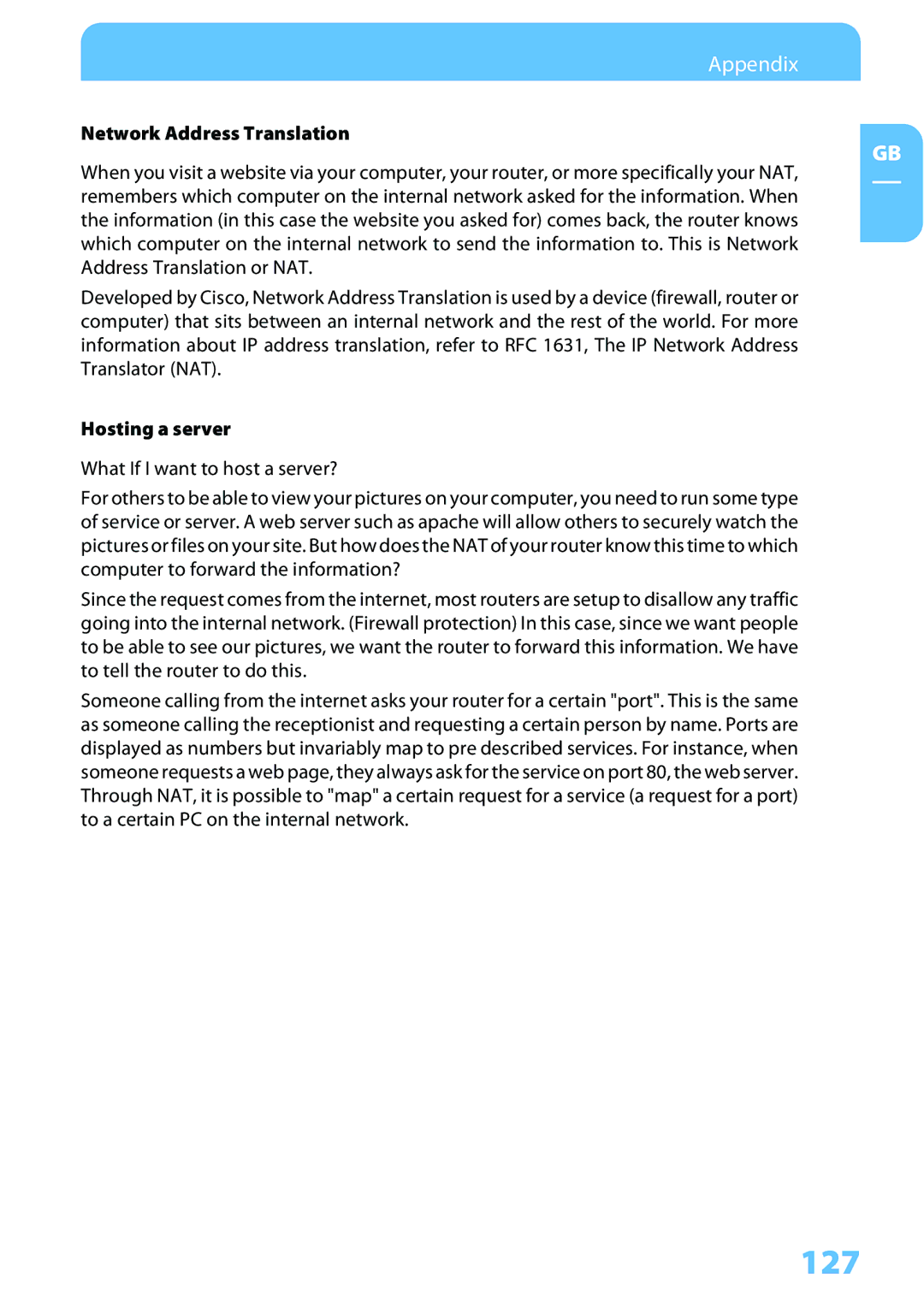
Appendix
Network Address Translation
GB
When you visit a website via your computer, your router, or more specifically your NAT, remembers which computer on the internal network asked for the information. When the information (in this case the website you asked for) comes back, the router knows which computer on the internal network to send the information to. This is Network Address Translation or NAT.
Developed by Cisco, Network Address Translation is used by a device (firewall, router or computer) that sits between an internal network and the rest of the world. For more information about IP address translation, refer to RFC 1631, The IP Network Address Translator (NAT).
Hosting a server
What If I want to host a server?
For others to be able to view your pictures on your computer, you need to run some type of service or server. A web server such as apache will allow others to securely watch the pictures or files on your site. But how does the NAT of your router know this time to which computer to forward the information?
Since the request comes from the internet, most routers are setup to disallow any traffic going into the internal network. (Firewall protection) In this case, since we want people to be able to see our pictures, we want the router to forward this information. We have to tell the router to do this.
Someone calling from the internet asks your router for a certain "port". This is the same as someone calling the receptionist and requesting a certain person by name. Ports are displayed as numbers but invariably map to pre described services. For instance, when someone requests a web page, they always ask for the service on port 80, the web server. Through NAT, it is possible to "map" a certain request for a service (a request for a port) to a certain PC on the internal network.
